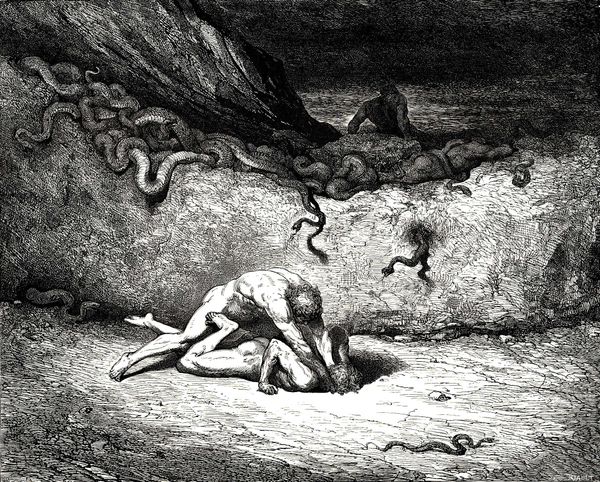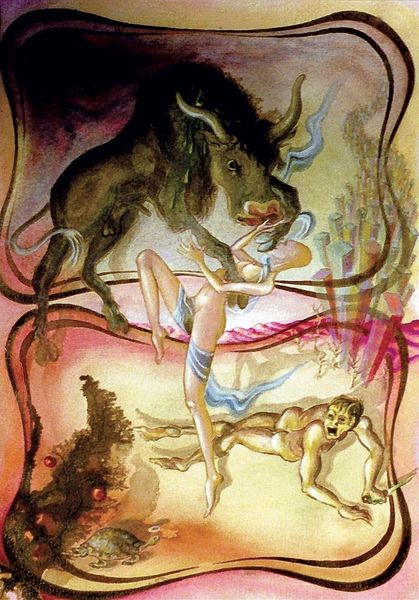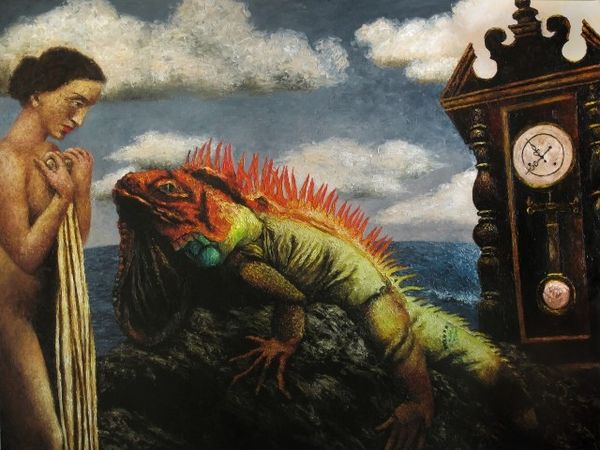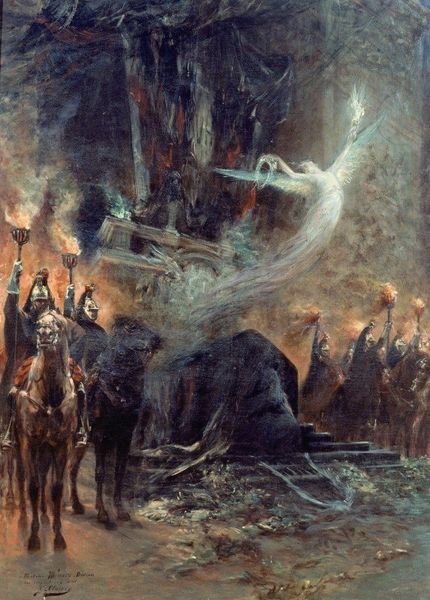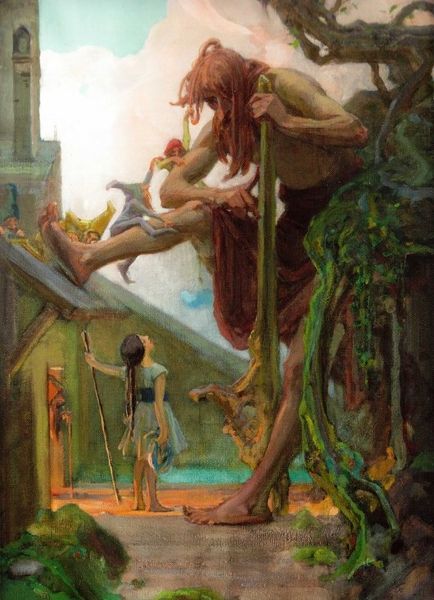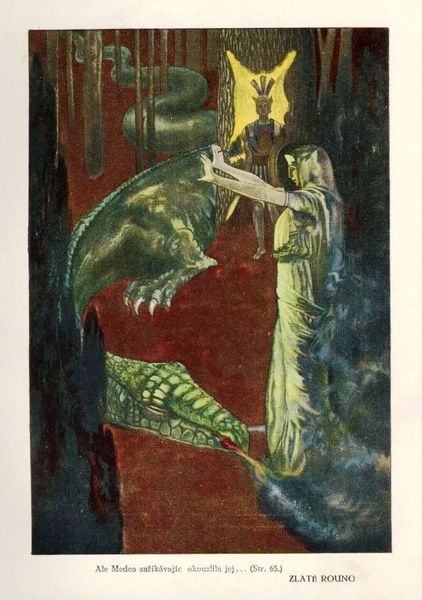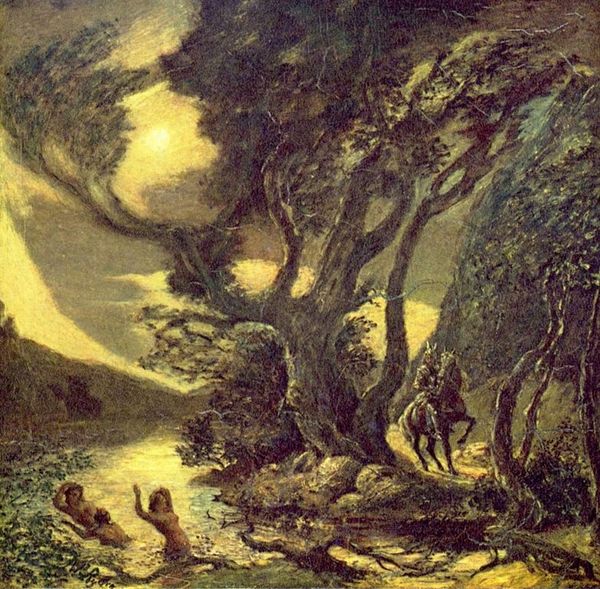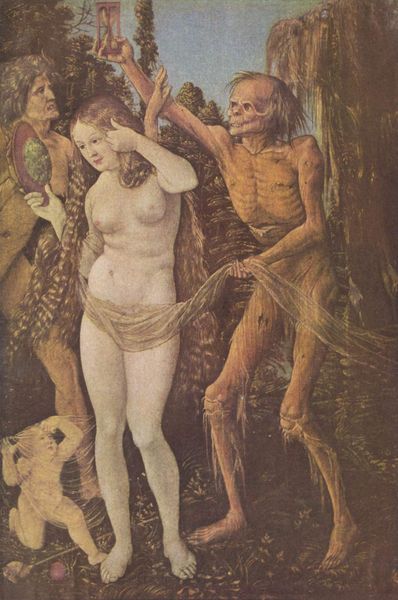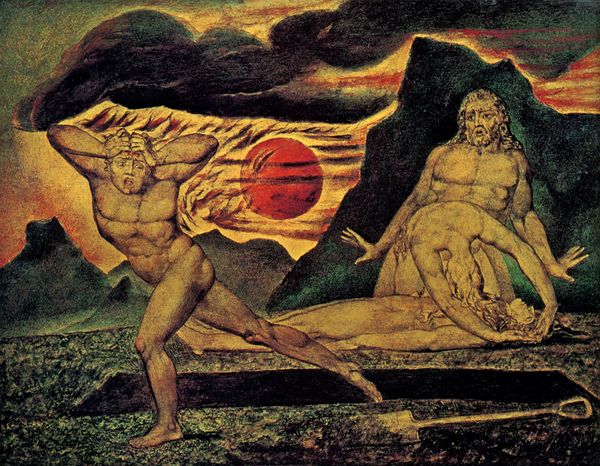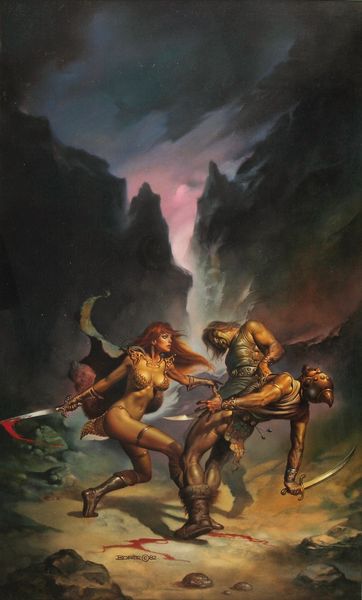
oil-paint
#
oil-paint
#
fantasy-art
#
figuration
#
oil painting
#
expressionism
#
history-painting
#
expressionist
Copyright: Public domain
Hermann Hendrich painted "Sigurd and Fafnir" in Germany at the turn of the 20th century. It depicts a scene from Norse mythology, where the hero Sigurd slays the dragon Fafnir. Hendrich, working within the context of rising German nationalism, drew inspiration from folklore and myth. The Nordic sagas, particularly the Volsunga saga, provided source material for nationalistic art. The image of a heroic figure like Sigurd resonated with the political climate, evoking notions of strength and destiny. The image creates meaning through contrasting light and shadow, symbolizing the struggle between good and evil. Sigurd, illuminated, represents the hero, while Fafnir lurks in darkness, embodying the monstrous and dangerous. The cultural references to Norse mythology would have been understood by the German audience, who saw themselves as inheritors of this cultural legacy. Hendrich's painting reminds us that art is shaped by its time and place. To truly understand this work, it's necessary to explore German cultural and political history, particularly the rise of nationalism and the use of mythology to construct a national identity.
Comments
No comments
Be the first to comment and join the conversation on the ultimate creative platform.
